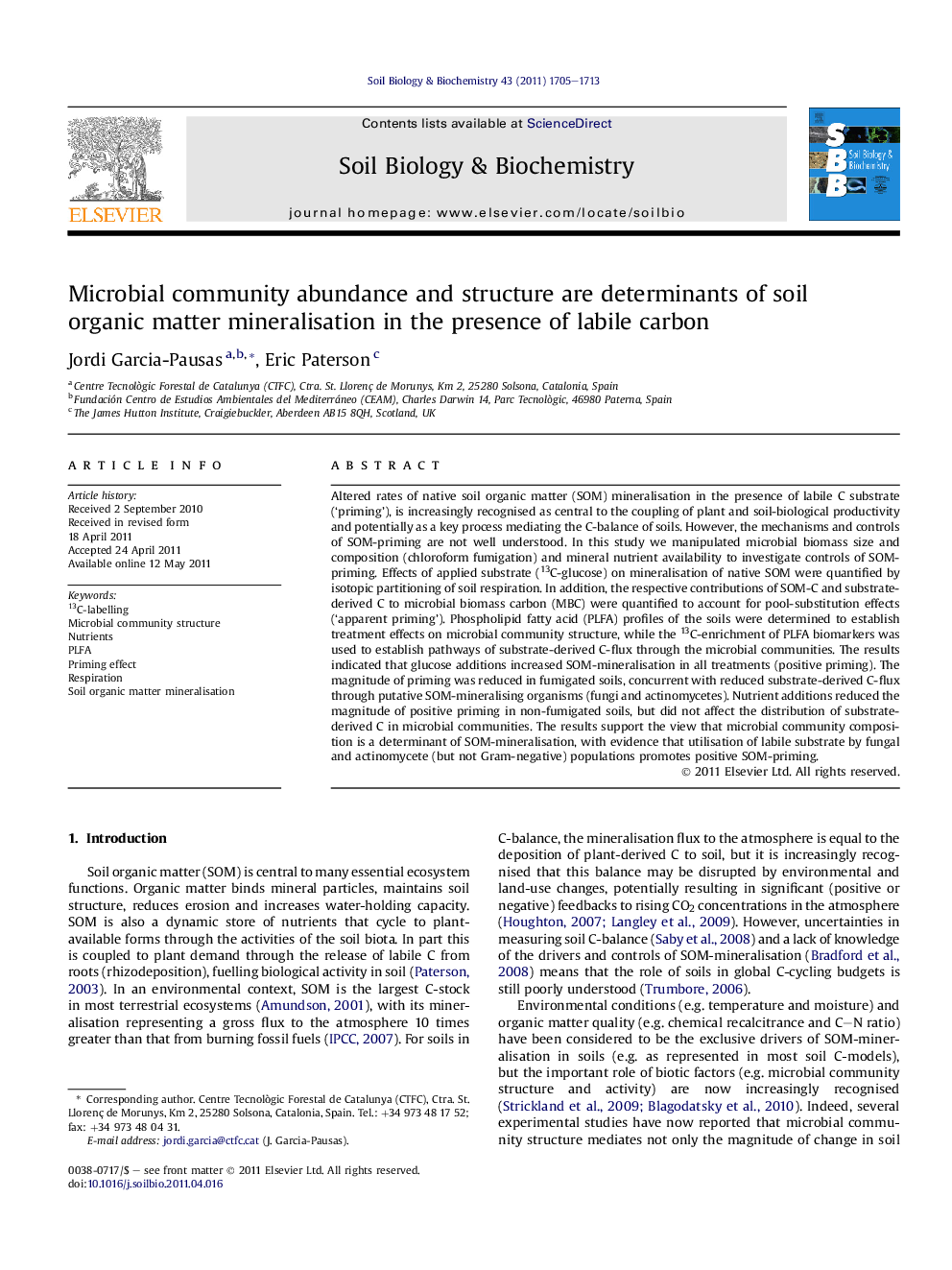| کد مقاله | کد نشریه | سال انتشار | مقاله انگلیسی | نسخه تمام متن |
|---|---|---|---|---|
| 2025109 | 1069981 | 2011 | 9 صفحه PDF | دانلود رایگان |

Altered rates of native soil organic matter (SOM) mineralisation in the presence of labile C substrate (‘priming’), is increasingly recognised as central to the coupling of plant and soil-biological productivity and potentially as a key process mediating the C-balance of soils. However, the mechanisms and controls of SOM-priming are not well understood. In this study we manipulated microbial biomass size and composition (chloroform fumigation) and mineral nutrient availability to investigate controls of SOM-priming. Effects of applied substrate (13C-glucose) on mineralisation of native SOM were quantified by isotopic partitioning of soil respiration. In addition, the respective contributions of SOM-C and substrate-derived C to microbial biomass carbon (MBC) were quantified to account for pool-substitution effects (‘apparent priming’). Phospholipid fatty acid (PLFA) profiles of the soils were determined to establish treatment effects on microbial community structure, while the 13C-enrichment of PLFA biomarkers was used to establish pathways of substrate-derived C-flux through the microbial communities. The results indicated that glucose additions increased SOM-mineralisation in all treatments (positive priming). The magnitude of priming was reduced in fumigated soils, concurrent with reduced substrate-derived C-flux through putative SOM-mineralising organisms (fungi and actinomycetes). Nutrient additions reduced the magnitude of positive priming in non-fumigated soils, but did not affect the distribution of substrate-derived C in microbial communities. The results support the view that microbial community composition is a determinant of SOM-mineralisation, with evidence that utilisation of labile substrate by fungal and actinomycete (but not Gram-negative) populations promotes positive SOM-priming.
► A demonstrated relationship between microbial community structure and SOM-mineralisation.
► This relationship only functioned in the presence of a labile C-source.
► Utilisation of labile C by components of the community mediated SOM-priming.
Journal: Soil Biology and Biochemistry - Volume 43, Issue 8, August 2011, Pages 1705–1713